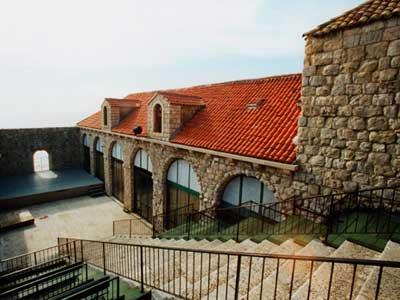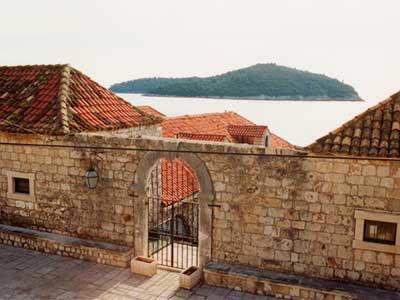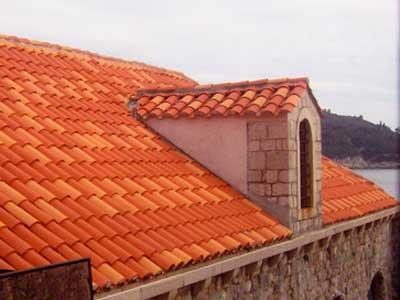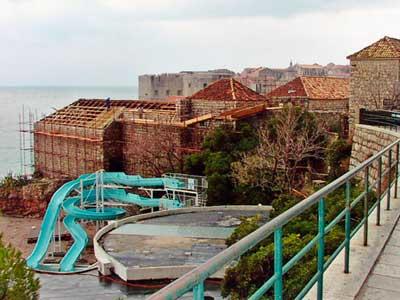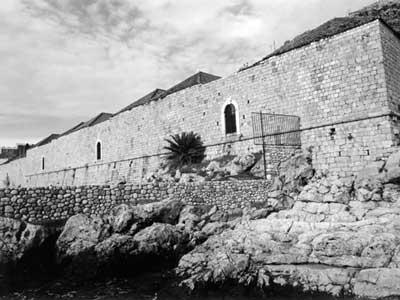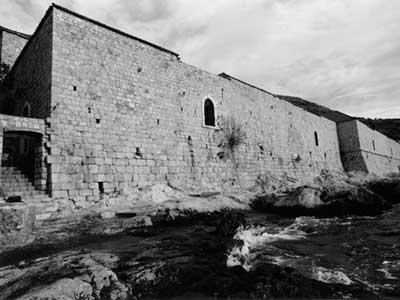Maritime Quarantine-Lazareti
Between the 14th and 16th centuries, Dubrovnik was a key hub in the trade between the Ottoman Empire and the West, and its lazaret, or quarantine station, was built in 1627 to isolate the ill and prevent plagues from entering the city through people on the ships entering its port. The walls surrounding the complex were added in the 18th century following the outbreak of a deadly epidemic. Considered the most humane and efficient facility of its kind at the time of its construction, the lazaret continued to fulfill its original function as a quarantine unit until the beginning of the 19th century. After its closure, it slowly deteriorated due to lack of maintenance and damage from by salt air, fire, earthquakes, and civil unrest. Modest repairs to the complex occurred in 1969-70.
2002 World Monuments Watch
WMF, with support from American Express, funded the roof restoration, protected the interior of the complex from further damage. The project also created a student design workshop and rotating artistic spaces within the structure. Inclusion in the 2002 Watch helped the project attract local support and heighten its visibility in the local community. By 2006 a vibrant cultural center had been created within the historic site.
The Dubrovnik lazareti is one of the only remaining and best preserved examples of its kind in Europe, and the only example of a maritime lazaret in the Mediterranean. Its survival with a large portion of its original materials, details, shape, and structure is unusual. Most comparable structures, including the oldest ones in Milan and Venice, and smaller quarantines on the Dubrovnik islands, were pulled down after the threat of plague had passed.

